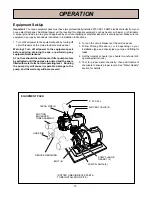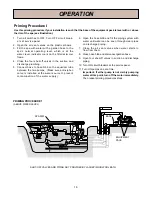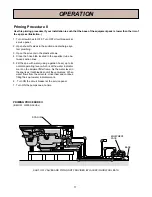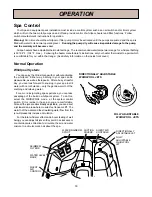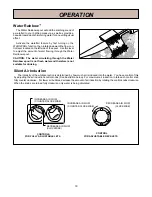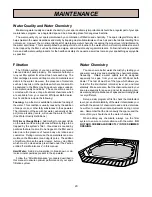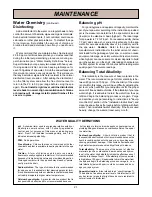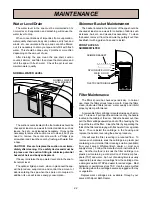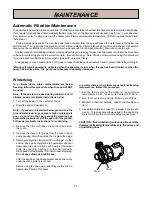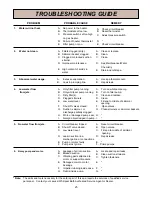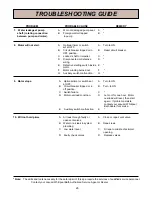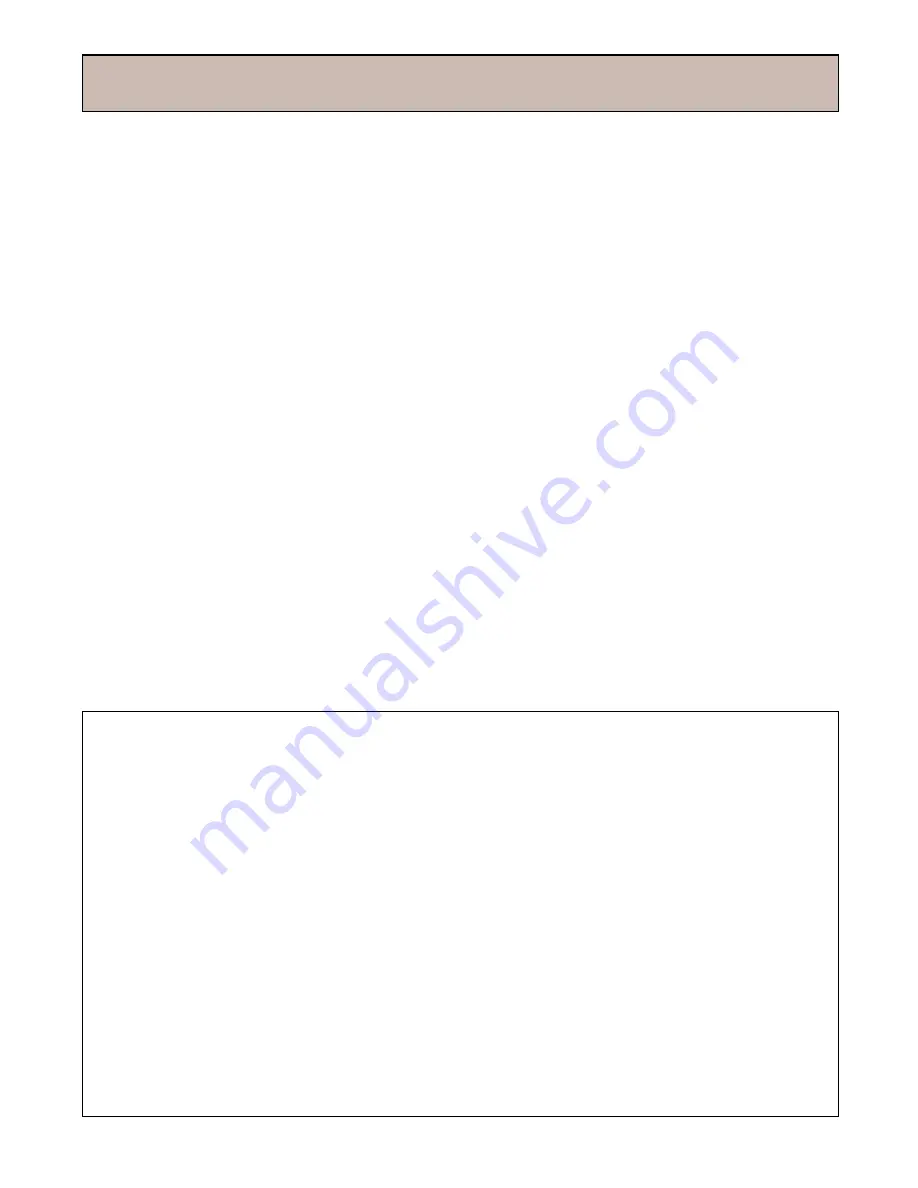
Water Chemistry
(continued)
Disinfecting:
Add a disinfectant to the water on a regular basis to help
control the amount of bacteria, algae and organic materials.
Such bacterial contaminants, if not controlled, could cause
skin rashes or other physical problems. To disinfect the spa
for normal use, first establish the amount of chlorine or
bromine to add and determine how often you need to add
it.
We recommend that you maintain a free chlorine level of
2.0-5.0 ppm at all times except when you must exceed that
during the initial purge/sanitizing procedure or during su-
perchlorination (see “Water Quality Definitions” below).
Superchlorinate your spa every two weeks with heavy use.
If using sodium dichlor, add one heaping tablespoon for
each 150 gallons of spa water. Scrub the spa surfaces with
this solution to remove any oily deposits. This will ensure
that any bacteria or algae which are resistant to the normal
disinfectant level are killed. After adding the disinfectant,
run the filter system and allow the free chlorine level to
return to the 2.0 to 5.0 ppm range before using the spa
again. Do not install a rigid cover until the disinfectant
level is back to normal. High concentrations of chlorine
or bromine will damage metallic plated finishes if the
cover is in place.
21
pH: A chemical term used in expressing relative acidity or
alkalinity in numeric values, with 7.0 usually regarded as
neutral, and for purposes of this manual, indicating pure
water. From 7 to 0 indicates increasing acidity, and 7 to 14
indicates increasing alkalinity.
PPM: Parts per million.
Free chlorine: Chlorine that has not combined with other
chemicals and that is available to destroy bacteria in the spa
water.
Trichlor: A form of chlorine used in pool or spa water
treatment; usually supplied in tablet form. Not recommended
because of its higher acidic nature and slow dissolving action.
Prolonged contact with the spa shell may bleach or perma-
nently mark the shell.
Sodium dichlor: The type of chlorine that is recommended
for spa use, as it is available in fast dissolving granular form.
It is neither excessively acid nor alkaline in character and does
not readily dissipate in higher water temperatures.
Calcium hypochlorite: A granular chlorine product that is
inexpensive and effective but not recommended because
WATER QUALITY DEFINITIONS
it often tends to form calcium deposits on heater parts and
plumbing fittings and leaves an unattractive film on the spa at
the water line.
Sodium hypochlorite: A liquid chlorine product that is
inexpensive and effective but not recommended because the
liquid is readily spilled onto the spa or a surrounding area,
causing permanent damage. It has limited effectiveness at
high water temperatures and readily affects pH balance.
Total alkalinity: The measure of the amount of alkaline
materials (such as carbonates, bicarbonates and hydrox-
ides) in the water. High alkalinity inhibits the effectiveness of
chemicals to change the pH. If the alkalinity of your spa water
is high (above 150 ppm), it is advisable to drain the water from
the spa and begin the balancing process over again. Low
total alkalinity (below 60 ppm) could be corrosive and dam-
age your spa system.
Superchlorination: (Also referred to as “shock treatment”.)
The addition of an above-normal level of disinfectant to kill
any bacteria or algae that might have become resistant to
normal levels of disinfectant.
Balancing pH:
For good hygiene and equipment longevity, maintain the
pH of your spa water according to the instructions provided.
pH is the measure to determine if the spa water is too acid
(low pH) or too alkaline or basic (high pH). The ideal range
for spa water is 7.2 to 7.6 pH. For excessive acidity (below
7.2 pH) add soda ash or sodium bicarbonate to the spa
water. For excessive alkalinity above 7.6 pH add dry acid to
the spa water. Caution: Refer to the spa chemical
manufacturer’s instructions for the initial amount of chemi-
cals to add for the gallonage of your spa. Low pH can cause
equipment damage, as acidic water will dissolve metals,
while high pH can cause scale or calcium deposits to build
up in the system or on the shell. After adding chemicals, run
the filter system for at least 30 minutes before testing water
quality again for accurate readings.
Balancing Total Alkalinity:
Total alkalinity is the measure of base materials in the
water. The recommended range for total alkalinity is be-
tween 80 ppm and 150 ppm. If the chemistry of the water
is not within this range, you will have difficulty adjusting the
pH level, which will affect your adjustments for the proper
amount of free available chlorine. If the alkalinity of your spa
water is high, it is advisable to drain the water from the spa,
refill and begin the balancing process over again. Purge
and sanitize your spa (according to instructions in "Equip-
ment Set-Up" section of the "Installation Instructions") and
clean the spa surfaces thoroughly before refilling with fresh
water. Then re-establish water chemistry. If the spa is used
heavily, change the water at least every month.
MAINTENANCE









